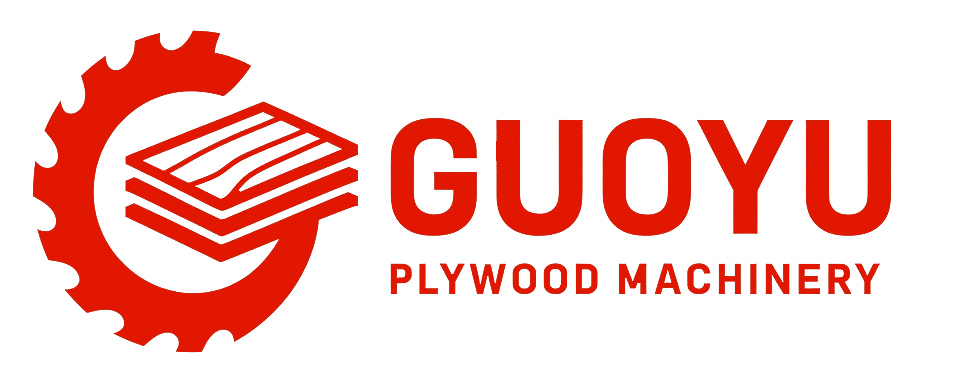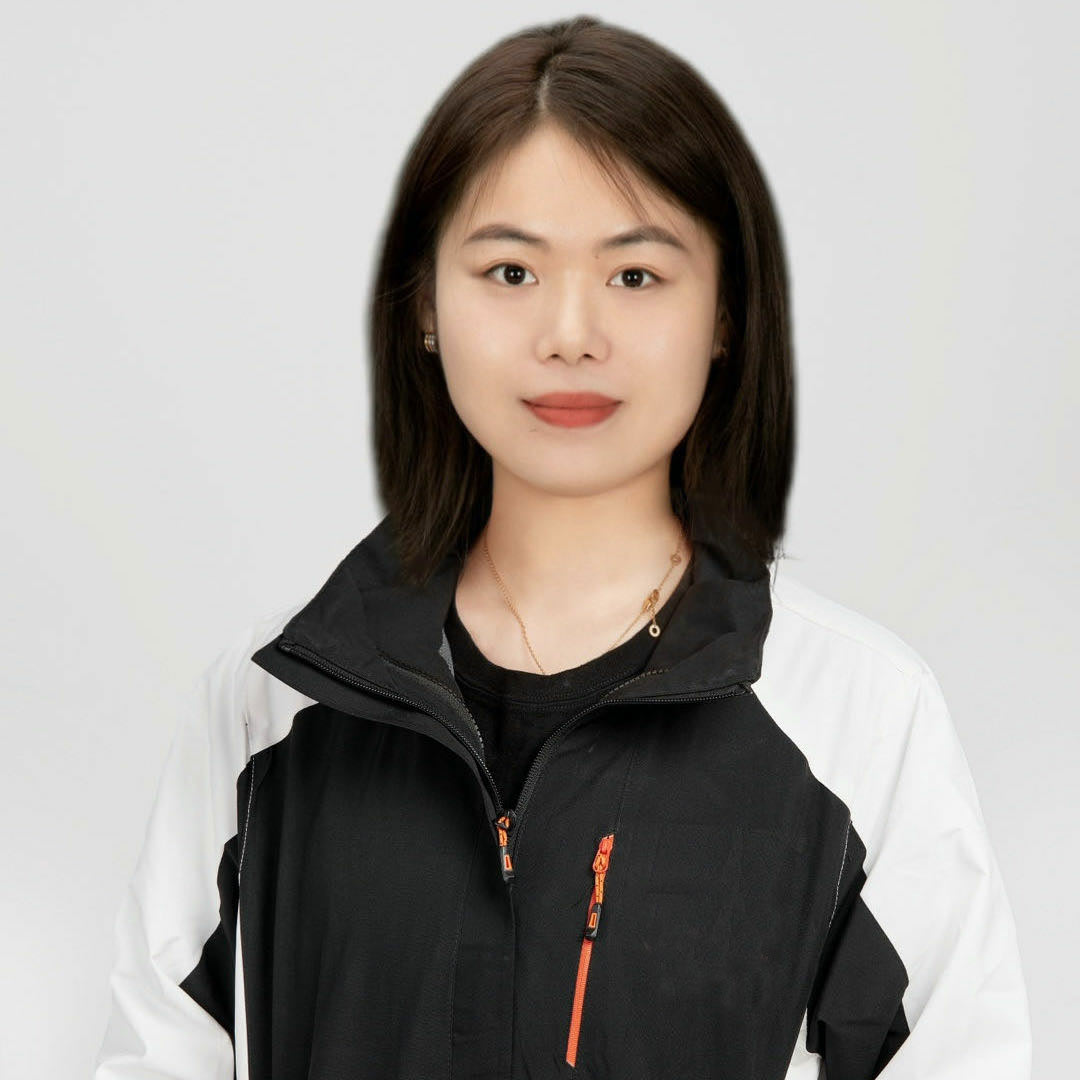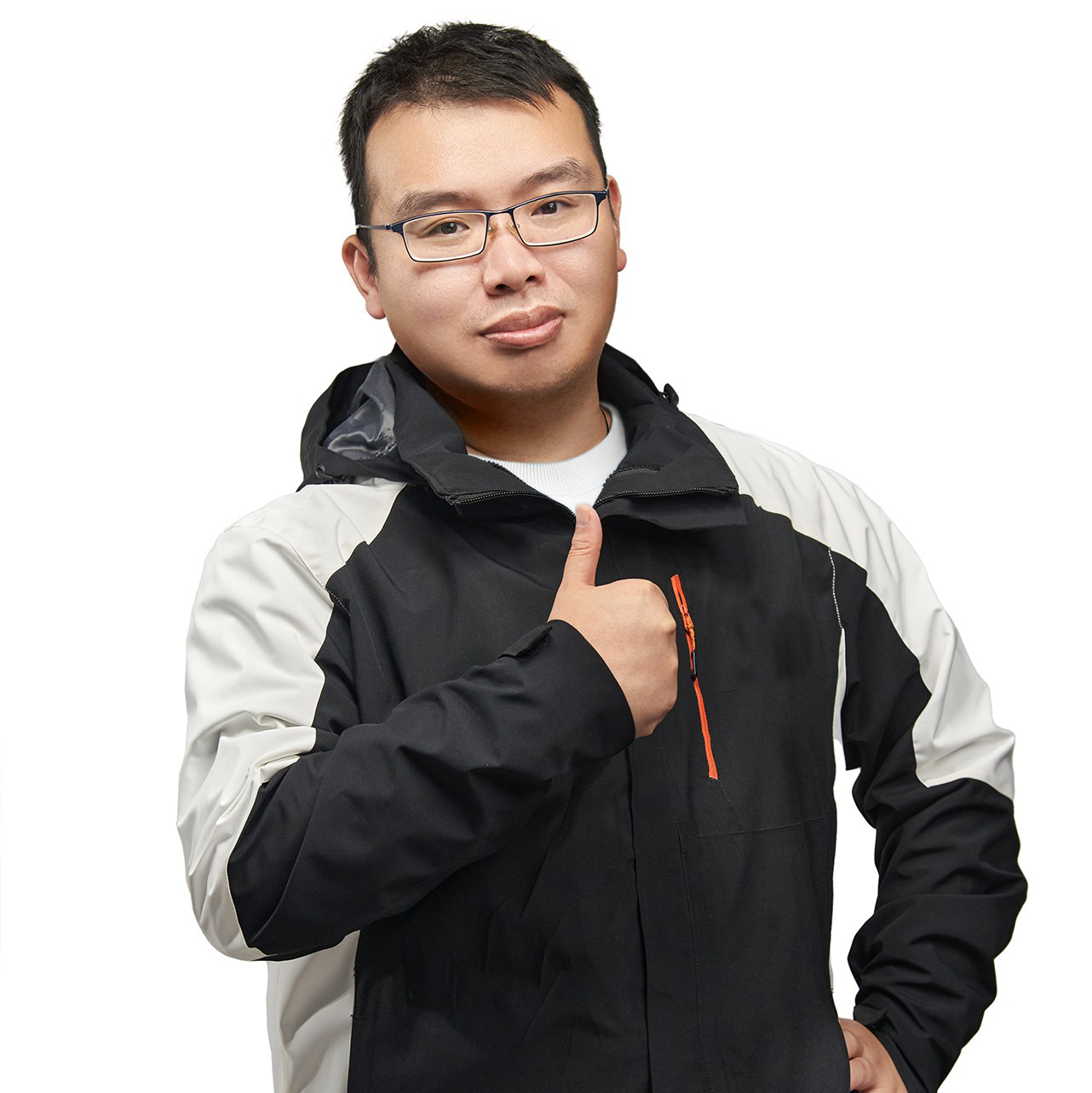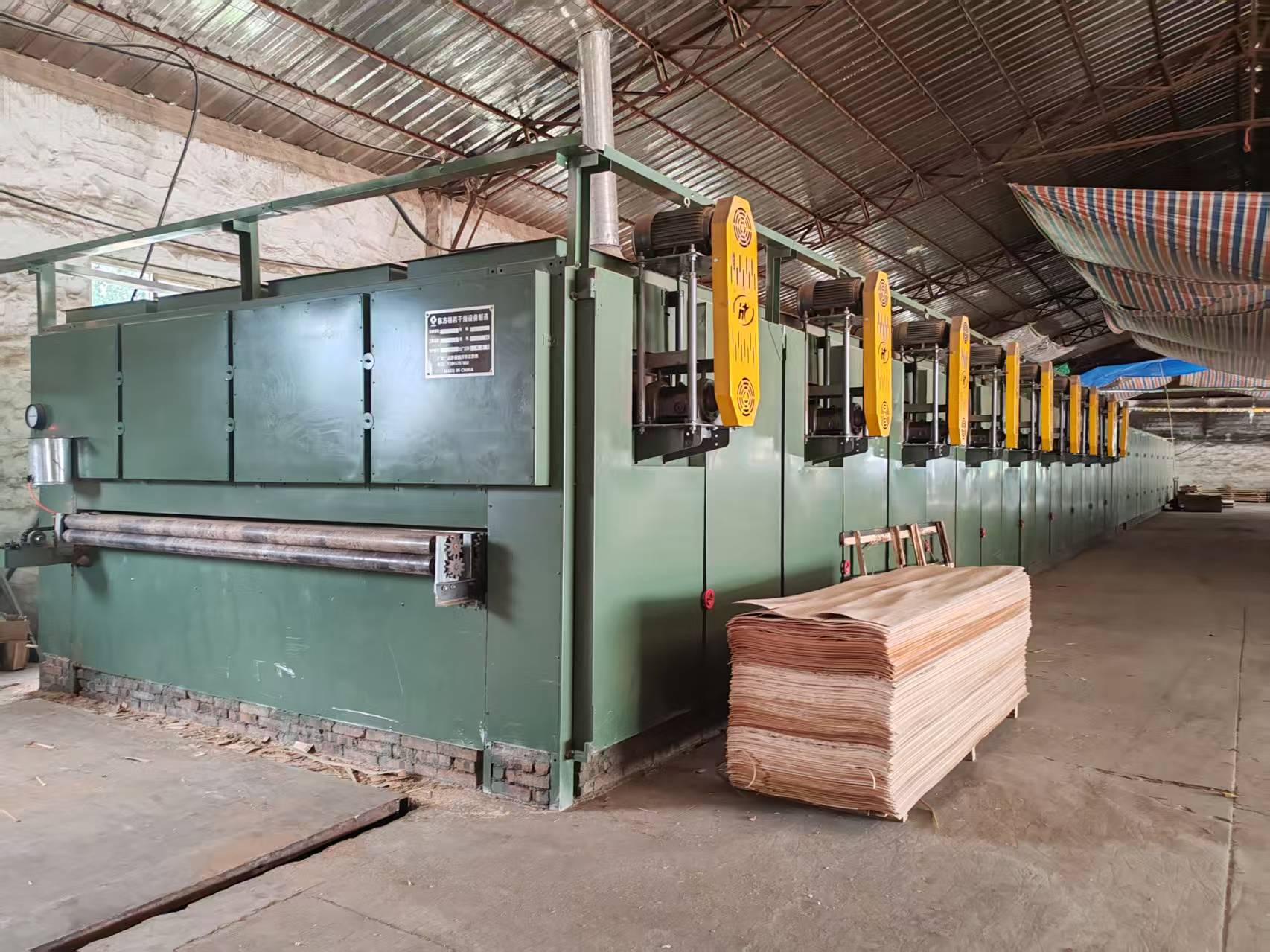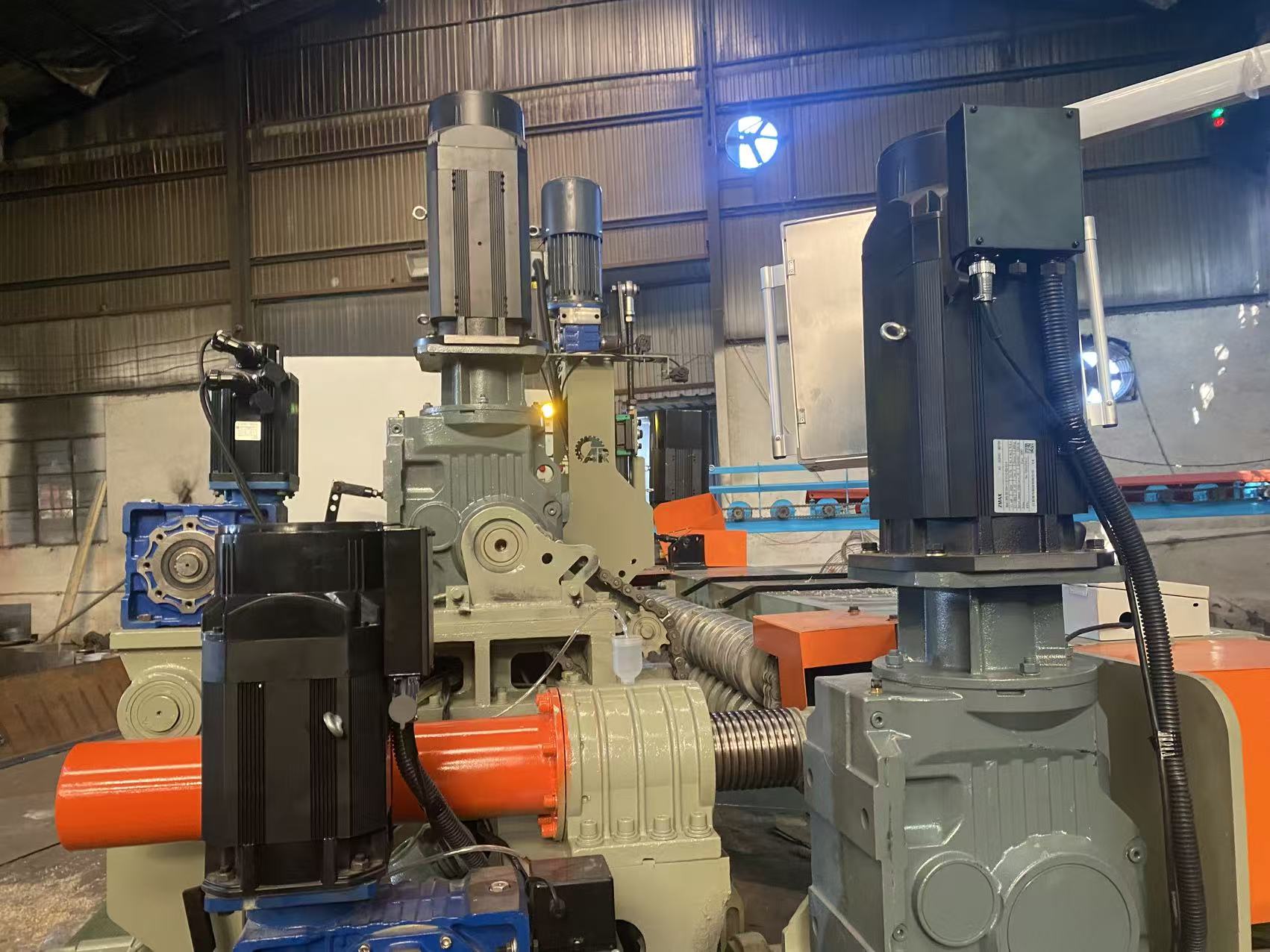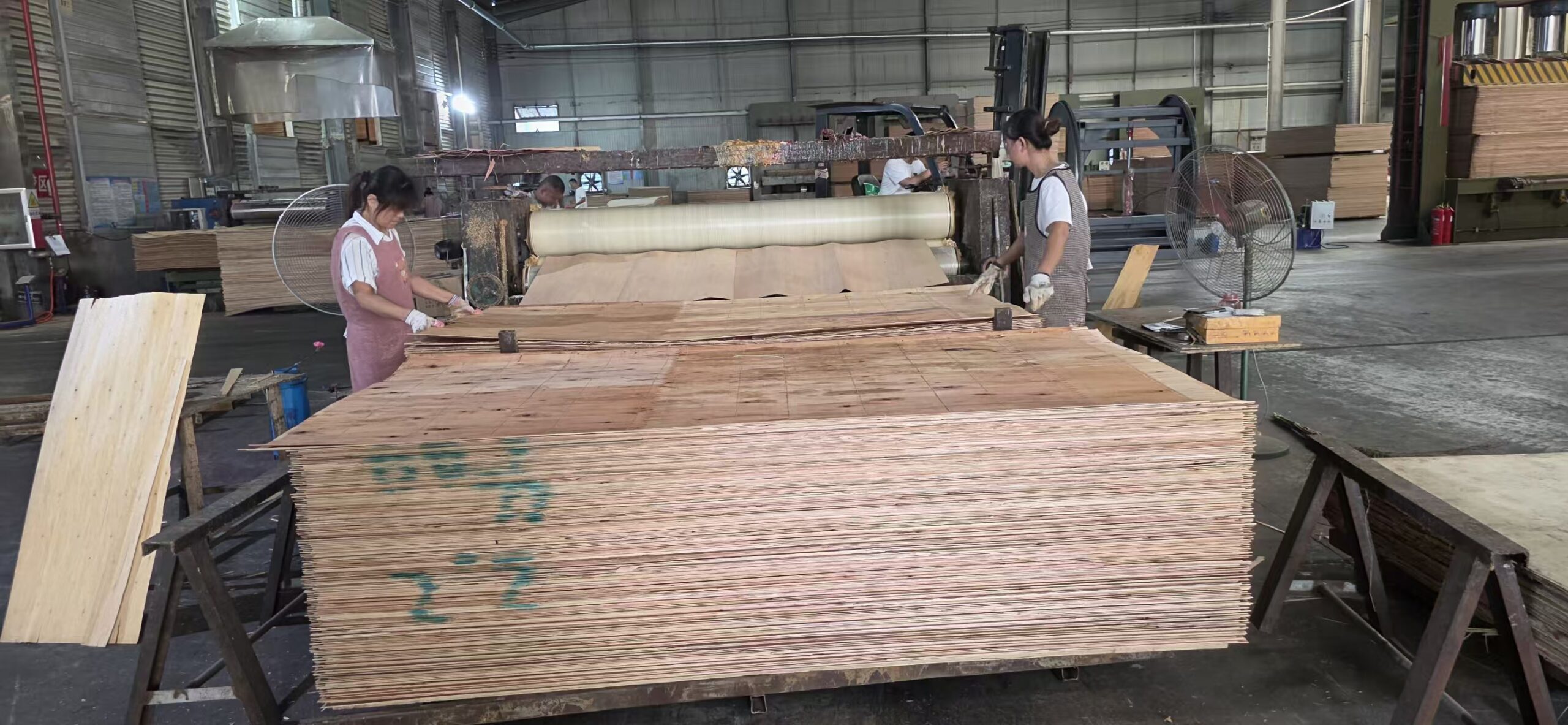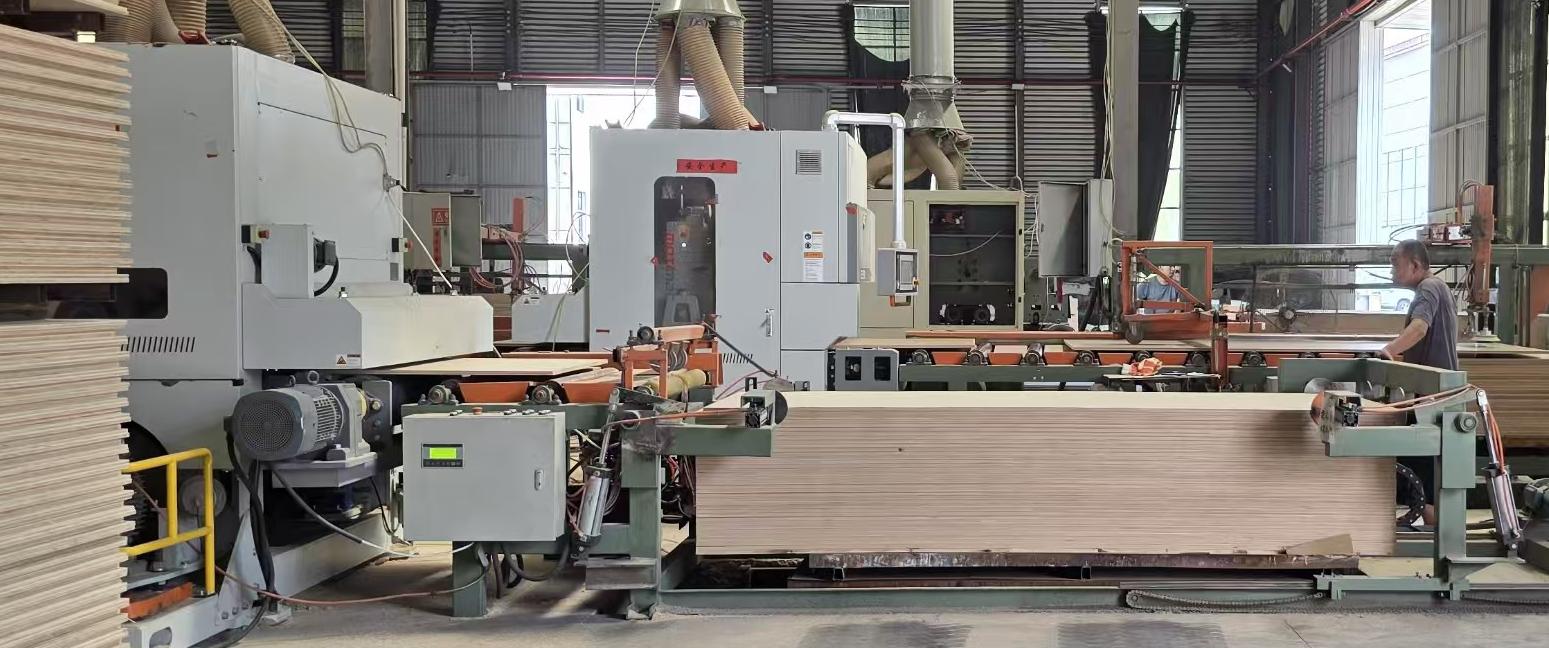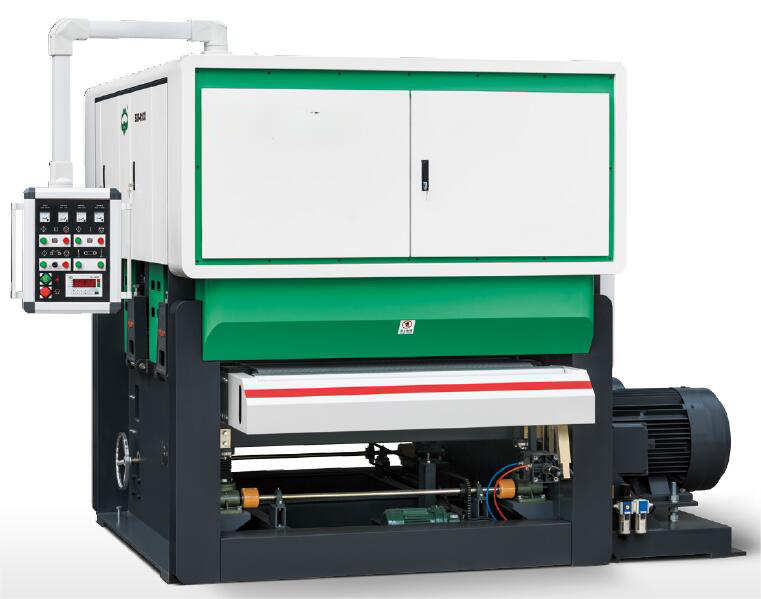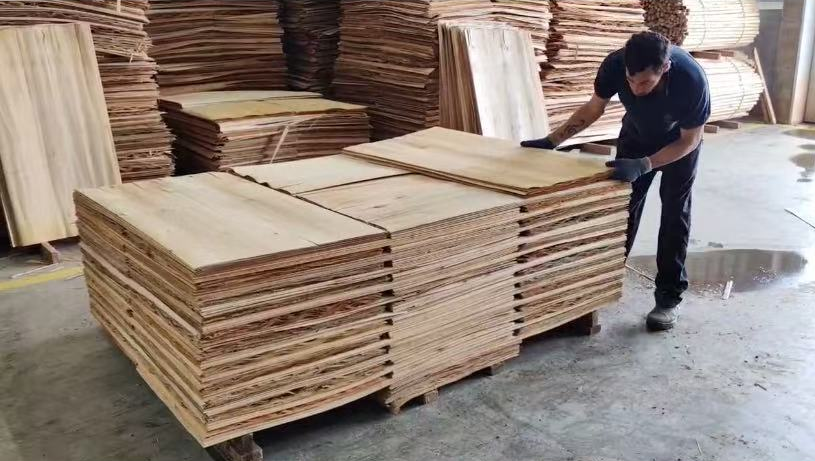Introduction to Veneer Drying Equipment
A veneer dryer is a type of continuous drying equipment widely used in the wood processing industry to remove moisture from veneers. The main types of veneer dryers include belt-type dryers, roller-type dryers, and platen-type dryers. Below is a detailed explanation of their structure and working principles:
Main Structure
1. Drying Section
- Function: Heats the veneer through hot air circulation, accelerating moisture evaporation.
- Components: Composed of several identical chambers, each approximately 2 meters long.
- Features: The number of chambers determines the total length of the drying section. The longer the drying section, the faster the veneer moves through, increasing efficiency.
2. Cooling Section
- Function: Provides ventilation and cooling under pressure to the veneer. Its main purposes are:
- Relieve internal stress in the veneer to keep it flat.
- Utilize the temperature difference (higher in the middle, lower on the surface) to evaporate remaining moisture.
- Components: Usually consists of 1-2 chambers.
Types and Features
1. Belt-Type Dryer
- Conveyance Method: Uses upper and lower circulating belts.
- Lower Belt: Responsible for transporting the veneer.
- Upper Belt: Provides appropriate pressure to prevent deformation during drying.
- Application: Suitable for veneers with a thickness of 0.5mm or more.
- Advantages: Well-suited for thin veneers and ensures stable operation.
2. Roller-Type Dryer
- Conveyance Method: Relies on the friction of paired upper and lower rollers to move the veneer forward.
- Application: Suitable for veneers with a thickness of 1.0mm or more.
- Limitations:
- The roller spacing restricts its use for thin veneers.
- Best suited for thicker veneers.
- Advantages: Provides high pressing force, resulting in excellent veneer flatness.
3. Platen-Type Dryer
- Features: Uses platens to apply pressure, suitable for applications requiring high flatness.
- Application Scenarios: Ideal for drying veneers with specific high-precision requirements.
Comparison and Selection
| Type | Applicable Thickness | Flatness | Drying Efficiency | Features |
| Belt-Type Dryer | ≥0.5mm | Moderate | High | Suitable for thin veneers |
| Roller-Type Dryer | ≥1.0mm | High | Medium | High pressing force, good flatness |
| Platen-Type Dryer | Based on specific needs | High | Medium | Suitable for high-precision applications |
Summary
The choice of veneer drying equipment depends on the thickness of the veneer, production efficiency requirements, and flatness needs. In industrial applications, belt-type dryers are commonly used due to their adaptability to thin veneers, while roller-type dryers are preferred for thicker veneers requiring higher flatness standards.
